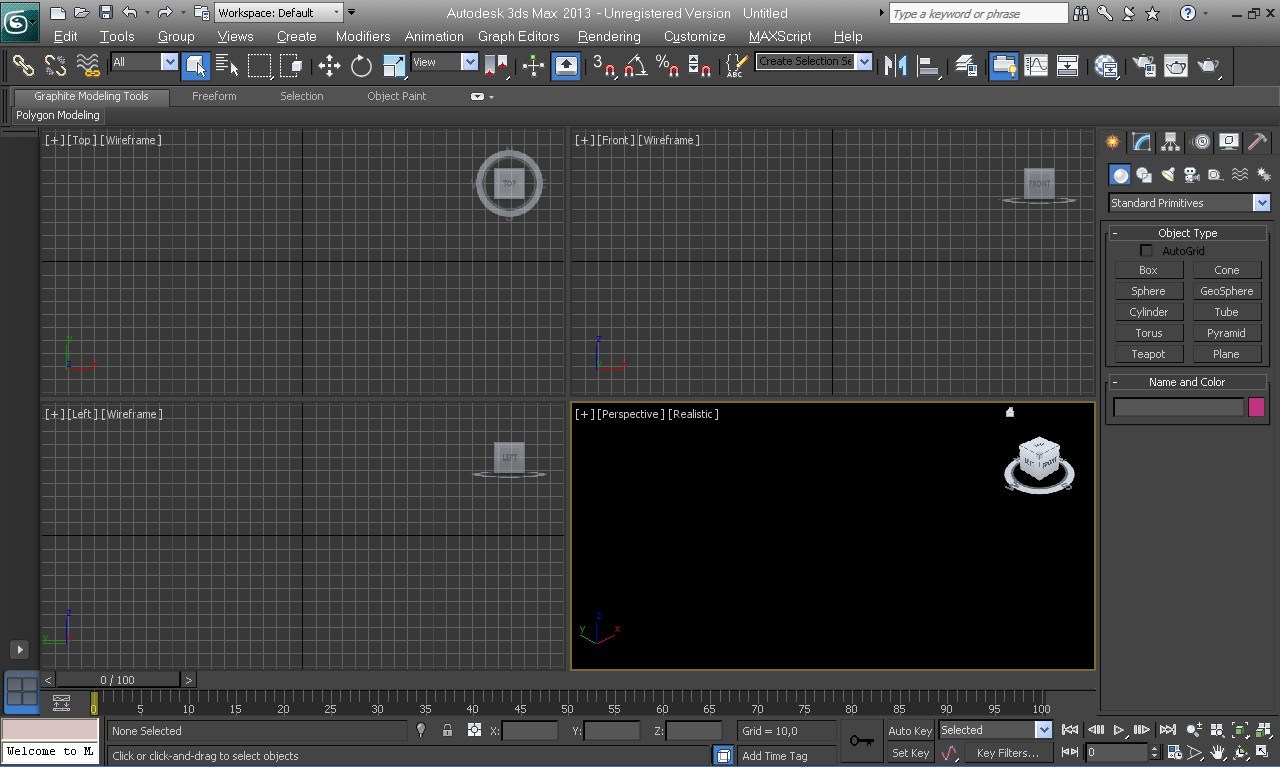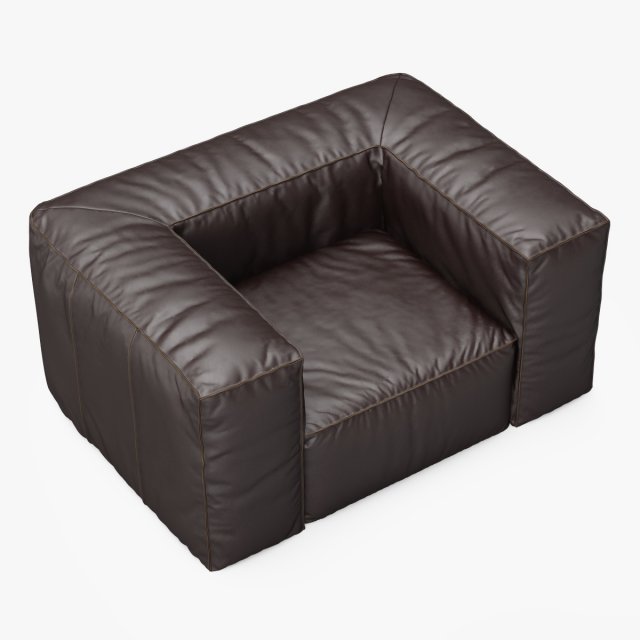

We'll talk about the interoperability with 3D Studio Max with some00:03:54 something like Tab Layouts which live over here. We'll also talk about some of the new features like the amazing Slate Compositing Editor and the Render Path System called State Sets which I really like. We'll talk about how we can render our scenes out. The ability to create things with our Command Panel and to modify those things. Now as far as some of the tools we're going to talk about, well we'll talk about the basic interface, like the viewports. Pretty boring but it's the texture artists and it's the lighting and all that stuff goes behind the scenes to take this basic shape and turn it into something spectacular. Many of the 3D models that you see in movies and in games start out just like this. But as you saw in those pictures we're going to be able to take this basic shape here and turn it into something kind of cool. Nothing to fancy, just something to to get you started, to get your feet wet. So let me go ahead and actually open this model so you can see what the model's going to look like here, that we're going to build. So you can have like a nice woodcut and you can make a nice postcard. And by the time we're done we'll also be able to do some really cool filters like this in Photoshop. So we're going to touch on UV Maps very briefly. And this is simply a little bounding box around the different parts of your model that you can then paint on so that when you put your images in Max, they're stuck to where they're supposed to go. We'll talk about how we can export what's known as a UV Snapshot out of Max as well. For example, the feeling of it, the colors, the materials you might want to incorporate like brick and moss and wood and that kind of stuff.

We're also going to talk about what a Mood Board is so that you can gather your ideas and your thoughts about what your scene should entail. So just in case you want to have a very unique feeling to your textures and not have to rely on images, we'll talk about techniques you can use to paint them.
#3D MAX 2013 HOW TO#
We're going to talk about how to paint our textures manually. So let me go ahead and just scroll through here. And using what looks like pretty much the most basic shapes in the world, we're going to talk about how we can create textures in several different ways. We're going to create a very basic cabin shape alright? And this project will be called the Ogre Cabin later on in the course. We're going to create this little scene here. But by the time we're done, let me just go ahead and show you very quickly what our final results going to be. We're going to talk about lots of the new features and I'll talk about that in just a moment. I'm also going to talk about how you can incorporate digital media like the iPad and Styli like the Jot Touch, the Pogo Connect and other tools to really help create sketches and that kind of stuff as well. Later on we'll get a little bit more in depth when we start talking about how we can take our 3D Studio Max files and work with other applications, for example Photoshop. So I want to gently guide you through how to use this application. I mean you name it you can do it inside of Max, it's that well known and it's probably one of the most used 3D applications on the planet. For example, video games, illustration advertising, motion graphics, medical. 3ds Max as it's known is one of the industry standard 3D applications for creating content for a wide variety of different media. Hi and welcome to this course on how to use 3D Studio Max 2013.


 0 kommentar(er)
0 kommentar(er)
